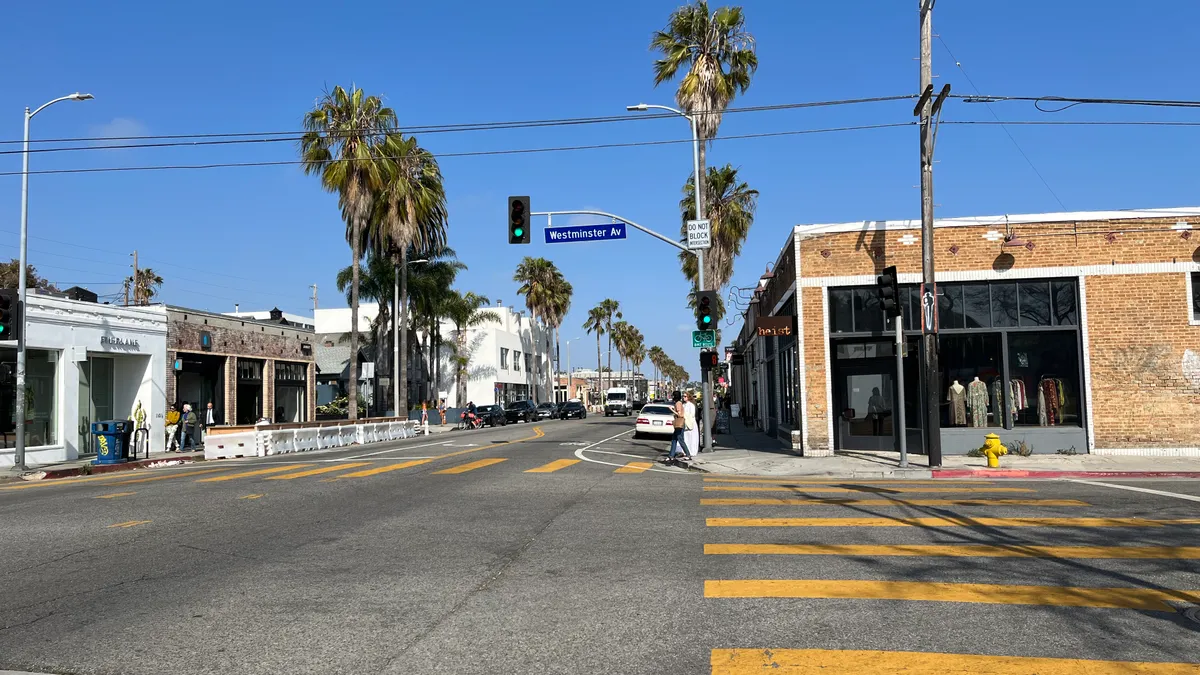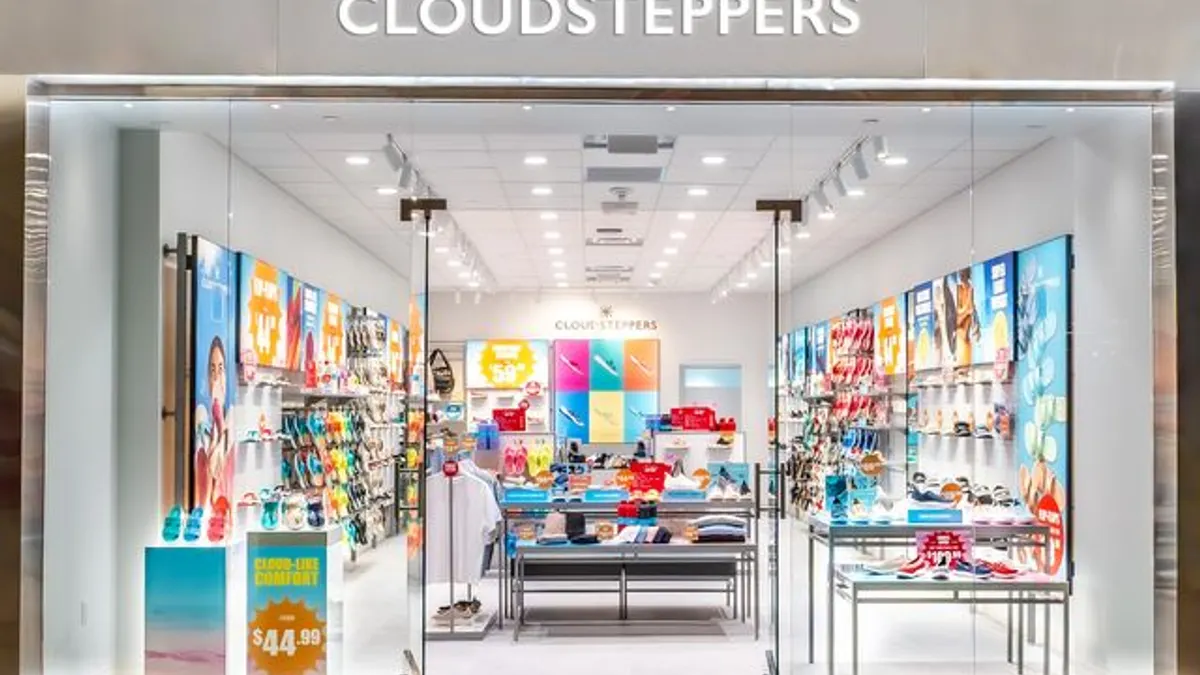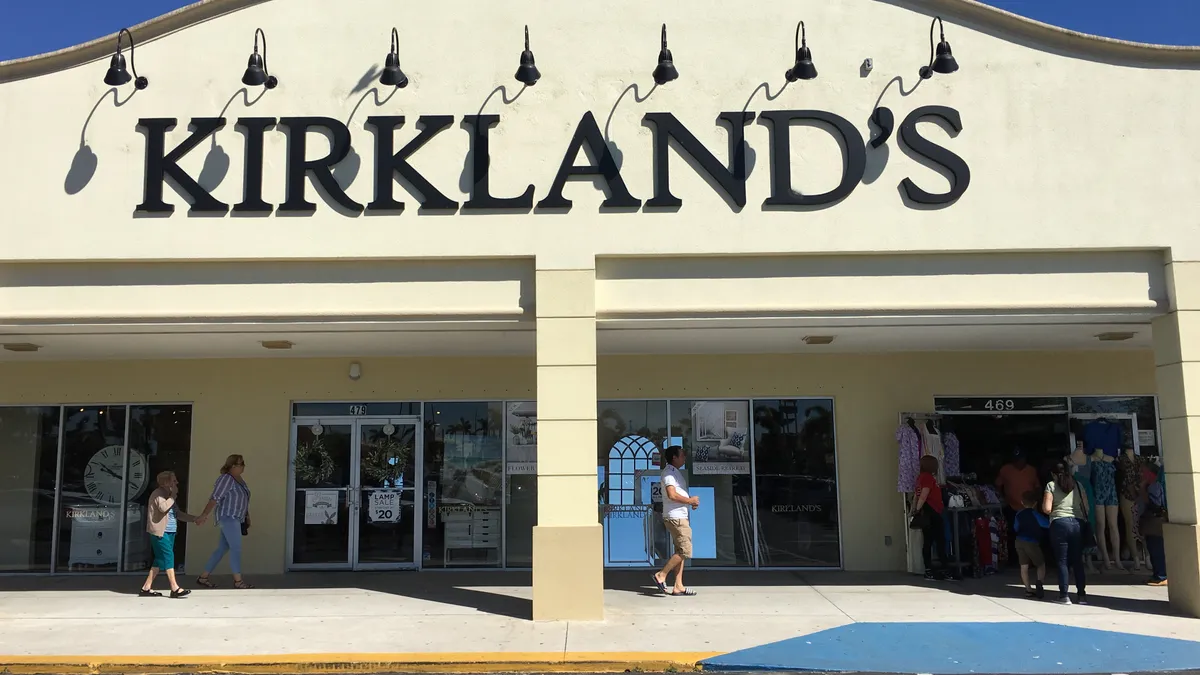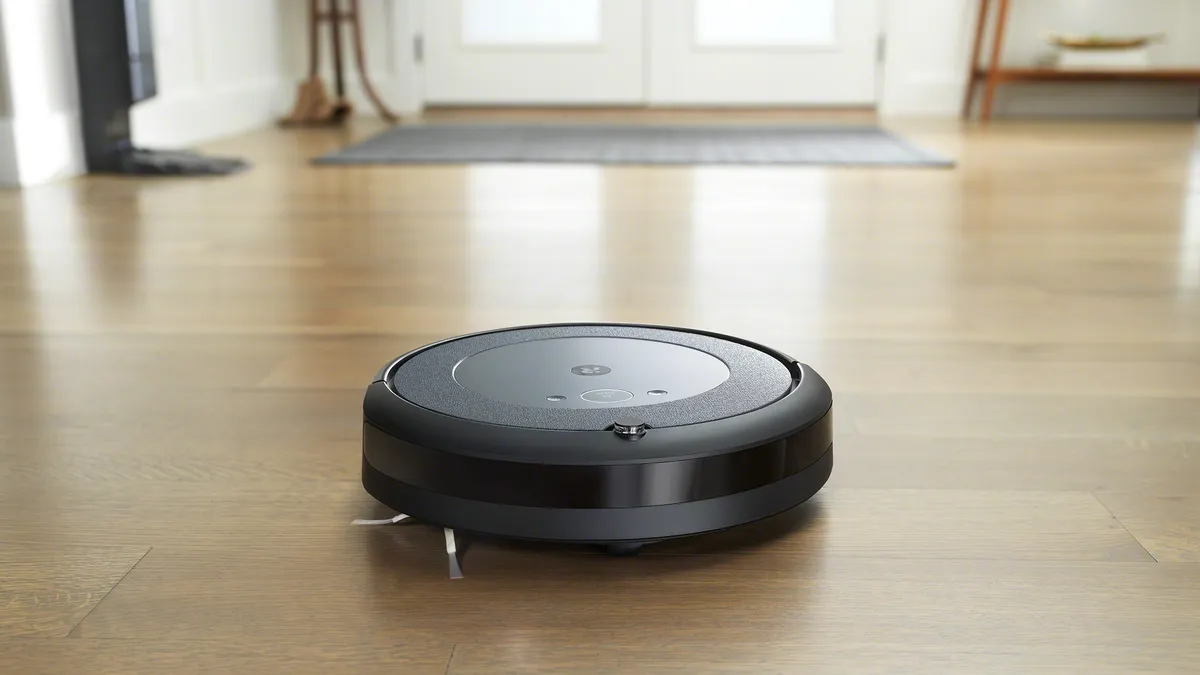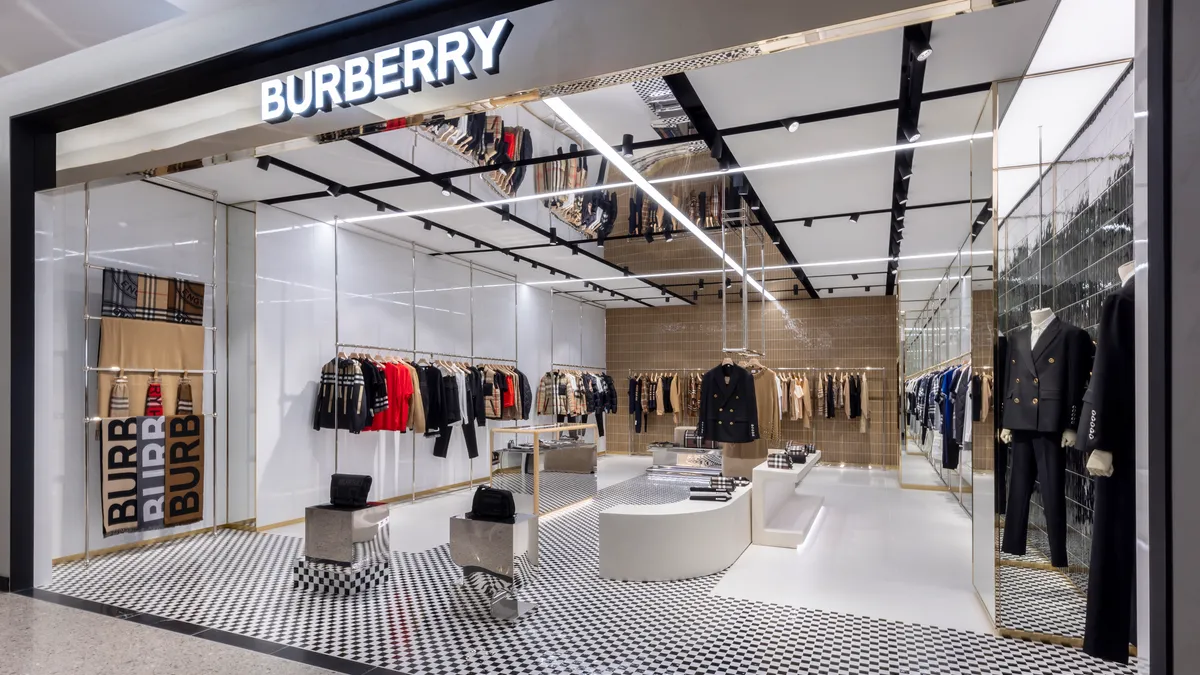New York, the City of Dreams, has traditionally been the springboard for retail’s biggest dreamers as well. Experimental store concepts line the city’s most popular shopping streets, and up-and-comers flock to the city to put their businesses to the test.
While New York is still paramount for retailers opening for the first time, the City of Angels — with its various neighborhoods and shopping streets — is on the rise as a destination for direct-to-consumer brands.
Jared Golden, the co-founder and co-CEO of Leap, a company that focuses on helping direct-to-consumer retailers open and run stores, says New York is the historical starting point for brands, but Los Angeles is a frequent choice for a brand’s second or third location. Other cities in California, like San Francisco, are also getting a lot of attention.
“I think it's always been a market of strong interest, and when modern brands think strategically about where to make investments in retail, it's always been in sort of the top handful,” Golden said of Los Angeles. In the last couple of years, though, “the LA area has climbed up the preference stack, if that makes sense. They tend to want to do it prior to the Bay Area, and an increasing number of brands are even launching in the LA area before New York.”
So, what is it about Los Angeles?
‘An amalgamation of small towns:’ What makes Los Angeles stand out
A list of tenants on Abbot Kinney Boulevard, one of Los Angeles’ most popular shopping streets, yields a massively long catalog of brands — both retail staples and relative newcomers alike. Its current tenants include Away, Allbirds, Warby Parker, Buck Mason, Vuori, Mejuri, ThirdLove, Everlane, Faherty, Scotch & Soda, Beautycounter, Ray-Ban, Birkenstock, Birdies and Marine Layer.
But Abbot Kinney is hardly the only place in LA where up-and-coming brands can be found. Melrose, The Grove shopping center, Larchmont Village and other areas all teem with activity — and they all have a different appeal to brands and shoppers.
Abbot Kinney Boulevard is home to a host of traditional retailers and up-and-comers
“It's sort of an amalgamation of small towns,” Golden said. “The LA metro area is big and overall dense, but it's sort of in pockets.”
Different areas have different personalities that might appeal to brands. Ryan Gurman, a retail specialist at CBRE focused on Los Angeles, said rents are now higher than they were pre-COVID and “trending upwards” in LA’s most heavily trafficked shopping areas, like Melrose, Abbot Kinney and Beverly Hills. Quality real estate in Los Angeles is also becoming harder to find, per Gurman.
“I guess the short of it is there's the right home for any brand,” Gurman said of Los Angeles. “So whether it's on Melrose, whether it's on Abbot Kinney, whether it's North Beverly, whether it's Larchmont or whether it's somewhere else — every brand is unique in its own way where they'll fall in love with the street for maybe different reasons.”
The co-tenants on a given street, the “vibe” of a shopping area and what types of consumers are found there all influence brands to choose one place over another. And the sheer number of shopping areas that Los Angeles offers means it can provide a home to a wide variety of retailers.
“There are brands that only want to be on Melrose and they point to their consumer as somebody who would be shopping at those co-tenants beside them, so that's where they want to be,” Gurman said. “Likewise with Abbot Kinney: You know, ‘x,y and z brand are on Abbot Kinney, we want to be there too.’ But it really depends, there's no straightforward answer.”
A long stretch of Melrose Avenue and Melrose Place are popular choices for brands
In addition to e-commerce brands looking for physical stores, Gurman has noticed a trend of social media-based businesses moving offline in Los Angeles. For companies opening their first stores in LA — like activewear brand ASRV, which Gurman worked with last year — being placed on main corridors “where all the lifeline brands are” allows them to take advantage of all the foot traffic to drive brand awareness.
The Grove, a shopping center in Los Angeles made to look like a small town, is actively seeking out those brands. Richard Lynch, director of property management at Grove developer Caruso, said via email that the property emphasizes bringing in “only in LA” retailers, including brands opening their first brick-and-mortar presence.
“We are naturally attracted to brands that share our customer-obsessed mission and we take great pride in introducing first to Los Angeles and even first ever locations for brands,” Lynch said. “We are home to the first and only flagship for celeb-loved Athletic Propulsion Labs’ (APL) flagship and more recently, introduced the first dedicated Asos in-store experience at The Grove.”

The shopping center also has an outdoor space dedicated to pop-ups for more creative store concepts or to allow brands to test physical retail without committing to a full store. Recent pop-ups have included Skims, Kylie Cosmetics and Lady Gaga’s Haus Laboratories.
It’s a strategy Caruso pursues across its portfolio. The company’s Palisades Village property opened with the first physical store for several digitally native brands, including Tamara Mellon, Jennifer Meyer and The Little Market. The first Amazon Style clothing store also launched at The Americana at Brand, another Caruso property.
In short, brands opening in Los Angeles have a slew of options for where to break ground. And each shopping area holds unique elements they can capitalize on.
‘Just a cool place to be:’ Why certain streets pop
Resonating with a given shopping street in Los Angeles goes beyond contracting with a local mural artist, which Golden said is “table stakes” in some areas. Leap works with DTC brands on store design as well as location, and the company shifts store layouts, color choices and other factors based on both the brand and the shopping area.
“It’s more about how a brand’s product mix is curated and presented, and how the frontline retail professionals that we employ and train — many of whom are actually local residents — actually are trained to talk about the product and the brand and contextualize it to the consumer’s lifestyle,” Golden said.
Leap operates stores in several different neighborhoods of Los Angeles
The hip places to be are evolving over time: Leap has brands at Century City, Newport Beach, Melrose and Abbot Kinney. Larchmont Village, a smaller shopping area in Los Angeles, is also seeing a lot of traction lately with first-to-market stores and secondary locations, according to Gurman. The street hosts coffee shops and restaurants in addition to retailers, and there’s foot traffic on the street “at all times of the day,” Gurman said.
“It’s just a very cool, unique vibe that you don't really get in many other places in the city,” Gurman added.
But what makes Los Angeles’ other shopping areas unique?
Abbot Kinney Boulevard
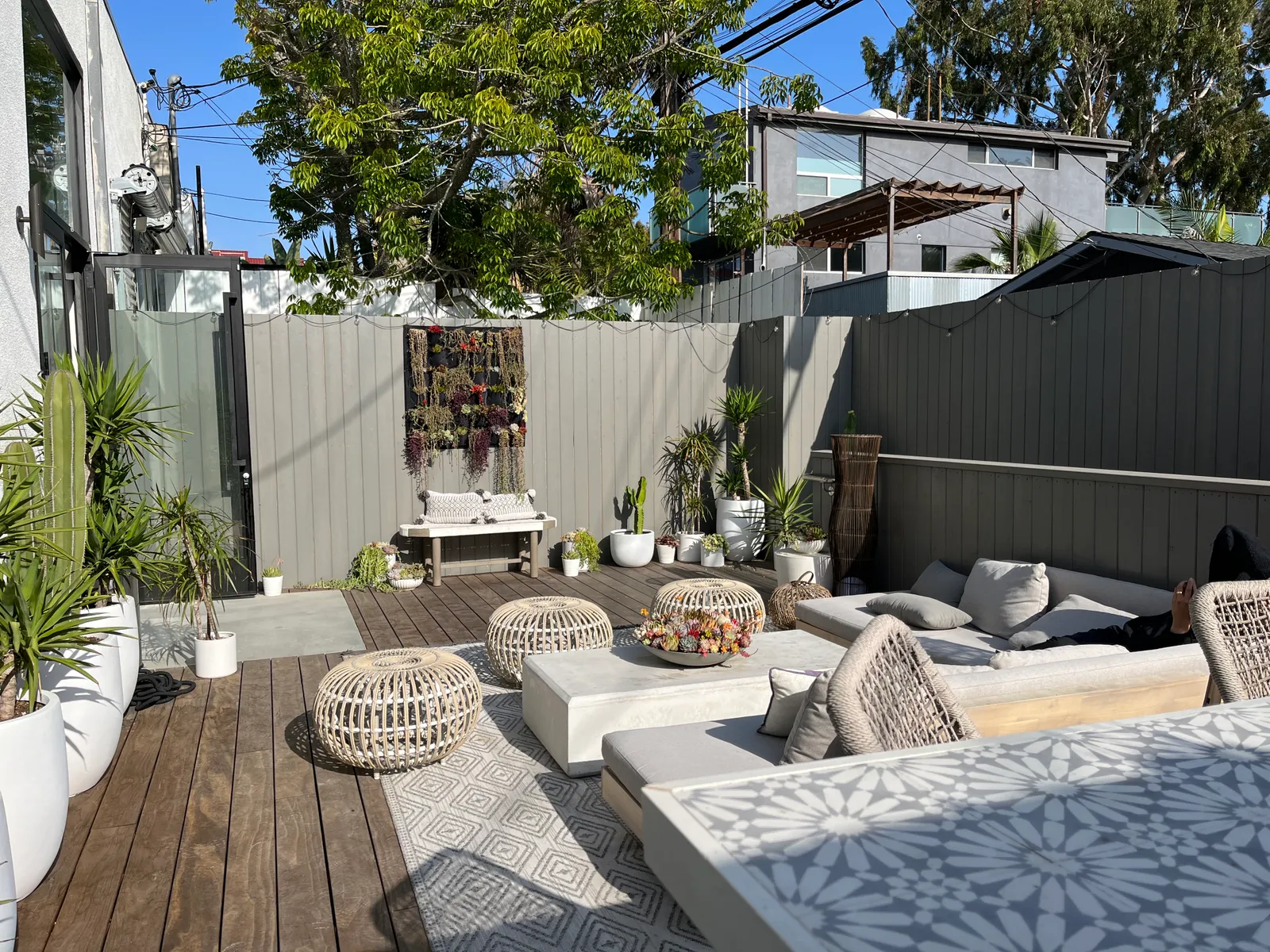
Just a few blocks away from Venice Beach, Abbot Kinney Boulevard features an extraordinary number of stores, many with beach house-inspired storefronts, nestled between colorful restaurants, coffee shops and other eating destinations. It’s not unusual for brands to have a backyard porch area open to customers — Vuori uses its space in part for workouts, for example.
Neon signs dot the streets, and there are major retailers alongside unique stores like Huset, a retailer selling Scandinavian kitchen and home products.
“These vibrant neighborhood corridors are a product of the neighborhood,” Golden said. “I think the reason why Abbot Kinney Boulevard has that vibe, and that building and architecture style, and the lifestyle consumer behaviors that go with that, is that it’s part of Venice and that's part of that whole coastal area of outer LA.”
It’s beachy, but it’s also growing more diverse and developing into somewhat of a tech hub, which differentiates the area from other coastal towns like Malibu.
“We try to be a truly local presence, like a locally endemic complement and add to that neighborhood vibe,” Golden said.
The large mix of brands is one of Abbot Kinney’s selling points, according to Golden, as is the fact that it offers stores with various price points, including some luxury. Both Golden and Gurman noted large amounts of foot traffic on Abbot Kinney and said it’s a tourist destination for many, even more so than Melrose. Abbot Kinney has “a more younger, trendier consumer,” according to Gurman, and is frequented by tourists and locals alike.
But the shopping street does have some overlap with Melrose. Both areas host Away locations, as well as Rag & Bone, Vince and Lululemon.
“Coincidentally, you're seeing groups from Abbot Kinney moving to Melrose as a second location and you're seeing a lot of synergies there,” Gurman said.
Melrose
Melrose is more interesting to brands as a flagship opportunity. The area has a more designer and luxury focus, but also features brands like Casper and Social Tourist (Hollister’s sub-brand made in collaboration with social media influencers Charli and Dixie D’Amelio).
Melrose Place, a subsection of the area marked by ivy-covered storefronts and succulent gardens, is “extremely sought after,” according to Gurman, and hard to find space on.
“I believe there is no more vacancy on Melrose Place, which is a natural selection for a street where brands want to be,” Gurman said. “Good foot traffic, great synergistic brands, a younger consumer, and it's just one of those streets that’s just a cool place to be.”

Melrose has less organic traffic than Abbot Kinney, which is able to appeal to customers running errands or going out for brunch, but it does serve as a destination for shopping. In some ways, Melrose is more like New York’s Fifth Avenue and Abbot Kinney is closer to SoHo.
Glossier has one of its flagship locations in Melrose, and the area also serves as a home to a Hoka store, a Nordstrom Local and an Outdoor Voices location.
“It's a way for a brand to define what their brand promise is and their offering and the experience they want to create in retail,” Golden said.
The Grove
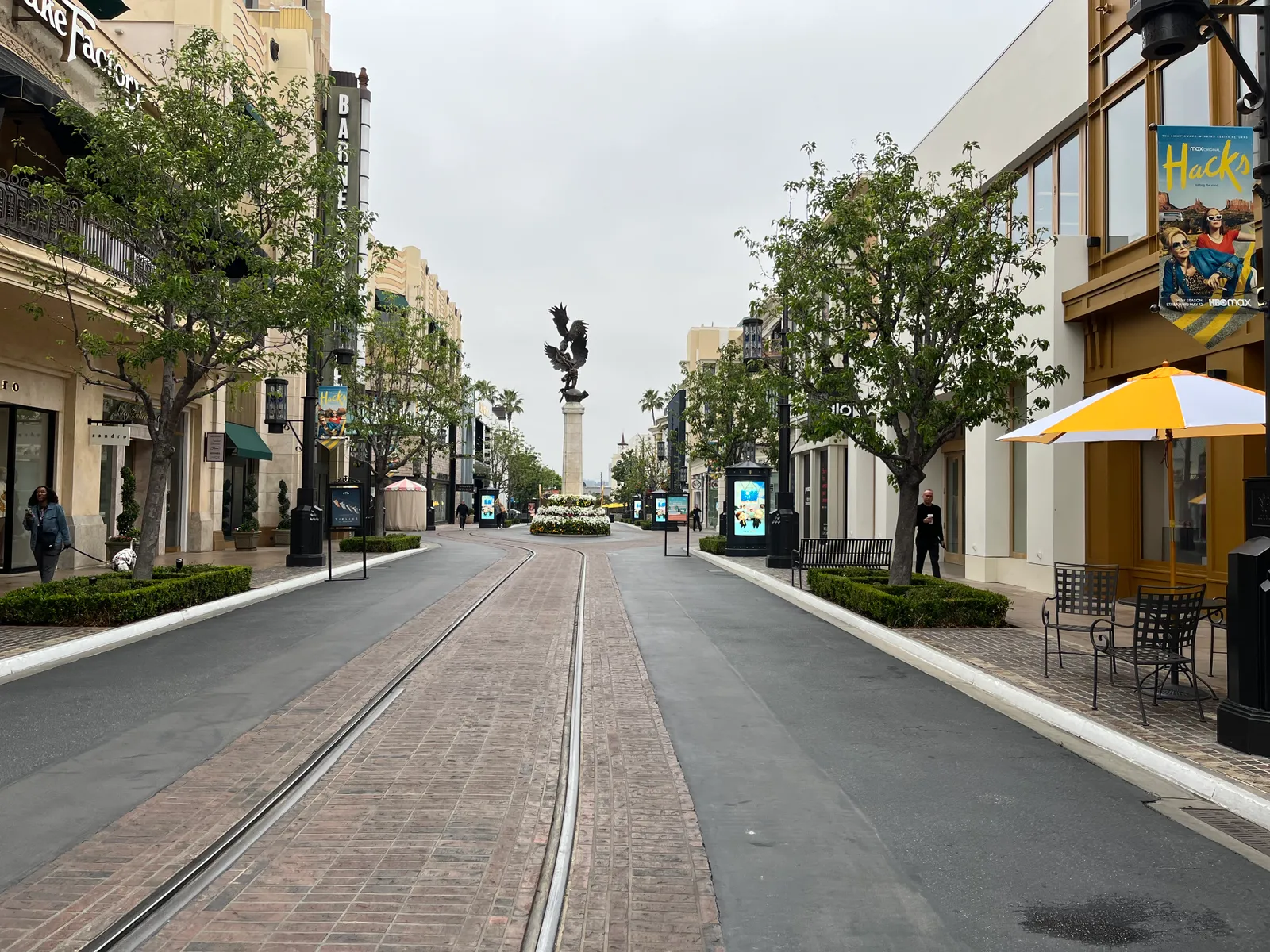
The Grove also has its own feel. The area is an outdoor shopping center that looks like a small town.
“The Grove was designed to evoke a small-town past, complete with crowned roadbeds, raised sidewalks, a double-decker trolley, central fountain and a ‘town green,’” Caruso’s Lynch said. “The streetscape architecture is nostalgic and echoes the styles prevalent in Los Angeles during the 1930s and 1940s. It’s all very intentional – we wanted it to feel nostalgic, and for our guests to be transported to a different time.”
The shopping center aims to provide “an experience beyond just retail and restaurants,” Lynch said. That might mean riding the trolley, watching the fountain show or coordinating other experiences with the center’s concierge team. Lynch noted The Grove sets up activities like VIP shopping at its retailers and picnics.
“The Grove is a little bit different because the Grove is a mall. It's an outdoor mall — it doesn't really feel like one — but it's an outdoor shopping center,” Gurman said, noting there are a number of flagship stores at the center. “It's a very enjoyable experience. There's onsite parking, you can spend the day there and it just breezes by.”
According to Lynch, there are also financial benefits to the experiential approach. Lynch says Caruso’s customers visit its properties three times more often, stay twice as long and spend twice as much as its competitors, though Lynch did not specify who those competitors were or how much revenue The Grove makes.
“We have long been the first choice for digitally native brands entering the brick-and-mortar space,” Lynch said. “Face-to-face interaction, the social aspect of shopping and the physical presence of retail goods fulfill a basic human need and experiential retail is what we do best. The Grove is simply a natural fit for DTC brands seeking a hybrid approach to better serve their audiences and we love introducing new concepts to our community.”
While The Grove is not as organic of a shopping area as perhaps Abbot Kinney is — the entire center is meticulously manufactured — the mall has grown to become a part of the Los Angeles community over time, according to Golden.
“Nevertheless, it stands in contrast to the other retail outlets around LA including other malls like Century City, and certainly the neighborhood corridors like Abbot Kinney and Melrose,” Golden said.
The ‘brunch and shop:’ How consumer behavior bolsters LA’s appeal
Los Angeles’ varied shopping streets would be meaningless without the foot traffic and consumer interest to support them. But Los Angeles has both of those in spades. Gurman noted that there are several “pockets” of Los Angeles that attract both tourists and locals, giving brands a consistent level of traffic.
And on streets like Abbot Kinney that feature many food options in addition to stores, brands benefit from what Golden calls the “brunch and shop” consumer. That shopper shows up for a meal and then winds up walking through stores afterward, whether or not they really intended to.
“They stroll down the street, they see what they see. They might pop into a couple shops that pique their interest, they may pop into one to grab that thing that was on their list … and then they go about their day,” Golden said. “It turns out to be awfully convenient and attractive to brands and platforms like Leap to be able to deploy and thrive in markets like Abbot Kinney because that customer demographic and psychographic is great for modern brand retail.”
Also helping brands is a more discovery oriented shopper, according to Golden. Los Angeles is a sprawling city with infamous traffic, which can easily lead to locals staying where they are rather than venturing out. But locals are increasingly traveling outside of their neighborhoods to visit shopping streets further from home, according to Golden, which gives retailers one more reason to love Los Angeles.
“You kind of keep an eye on what's on your block, or what shops and restaurants open in the area or other neighborhoods you're a fan of around your city. And you kind of are conscious of that versus ignoring it,” Golden said of shoppers in LA. “And when something opens, just for the sake of finding out what it's all about, you may visit or at least read about it, or maybe even become a consumer. For folks who are like that, it's kind of easy to miss the fact that most folks aren't.”



